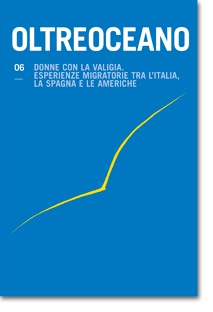Mujeres que pasaron ‘la frontera’
Keywords:
mujer, creación literaria, s. XX, escritoras cubanasAbstract
En el presente trabajo se examina el recorrido y la figura de la mujer en la creación literaria de la segunda mitad del siglo XX, dirigiendo particular atención al aporte de algunas escritoras cubanas. En una época donde parecía impensable que las mujeres pudieran volverse independientes, algunas entre ellas lograron rebelarse a los cánones y escaparse con maletas imaginarias, llenadas de sueños reales, para que el mundo escuchara su voz.
Women Who Crossed the Border
This essay investigates the figure of the woman and her evolution in the literary creation of the second half of the XX century, with a particular interest in the contribution by Cuban women writers. During an epoch in which women’s emancipation was inconceivable, some of them succeeded in rising against canons and in fleeing with imaginary suitcases, filled with “real” dreams, so that the world could hear their voices.
Donne che passarono la frontiera
Nel presente articolo si esaminano il percorso e la figura della donna nella creazione letteraria della seconda metà del XX secolo, con particolare attenzione al contributo di alcune scrittrici cubane. In un momento in cui sembrava impensabile che le donne potessero diventare indipendenti, alcune di esse riuscirono a ribellarsi ai canoni e fuggire con valigie immaginarie, piene di sogni reali, affinché il mondo potesse sentire la loro voce.
Downloads
References
Anzaldúa, G. (1987): Borderlands / La Frontera: The New Mestiza. San Francisco: Aunt Lute Books.
Araújo, H. (1982): Narrativa femenina latinoamericana. Hispamérica, 32, pp. 14-33.
Araújo, N. (1997): El alfiler y la mariposa. Género, voz y escritura en Cuba y el Caribe. La Habana: Letras Cubanas.
Cámara, M. (2002): La letra rebelde: estudios de escritoras cubanas del siglo XX. Miami: Universal.
Cocco de Filippis, D. (1992): Prólogo. In D. Cocco de Filippis (Ed.), Antología de cuentos escritos por mujeres dominicanas (pp. 25-43). Santo Domingo: Librería Trinitaria e Instituto del Libro.
Fletcher, L. (1994): Mujeres y cultura en la Argentina del siglo XIX. Buenos Aires. Feminaria.
Franco, J. (1982): Apuntes sobre la crítica feminista y la literatura hispanoamericana. Hispamérica, 32, pp. 34-47.
Henríquez Ureña, C. (1982): La mujer y la cultura. Estudios y conferencias. Ciudad de la Habana: Letras Cubanas, pp. 440-570.
Hernández, Á. (1992): De críticos a creadoras. D.Coccode Filippis (Ed., recopilación, prólogo), Antología de cuentos escritos por mujeres dominicanas (pp.402-436). Santo Domingo: LibreríaTrinitaria e Instituto del Libro.
López González, A. (1985): De la intimidad a la acción. La narrativa de escritoras latinoamericanasy su desarrollo. Cuadernos Universitarios, 23, pp. 61-83.
Montero, S. (1989): La narrativa femenina cubana, 1923-1958. La Habana: Academia.
Regazzoni, S. (2009): La condesa de Merlín. Una escritura entre dos mundos o la retórica de la mediación. Venezia: Mazzanti.
Spacks, P.M. (1980): La imaginación femenina. Colombia: Debate de Madrid y Pluma.
Downloads
Published
How to Cite
Issue
Section
License

This work is licensed under a Creative Commons Attribution-NonCommercial-ShareAlike 4.0 International License.
The authors undertake to comply with the following conditions, which are considered accepted at the time of submission of their contributions.
The sending of a text implies that it is unpublished and not submitted to be published elsewhere.
1. If accepted, the author shall confer on the publisher the right to publish and distribute it both in paper form and in the online electronic edition. The published articles will be downloadable and made available in open access.
2. Provided that it correctly indicates that the first publication took place in the journal Oltreoceano. Rivista sulle migrazioni the author has the right to: a) reproduce the article in separate extracts or collected in a volume; b) publish the article on their personal website or teaching site provided that these sites are of a non-commercial nature; c) deposit the article in online archives of a non-commercial nature, linked to the institution they belong to or as part of projects for the non-commercial dissemination and open access of scientific works.
The use of contributions by third parties, for commercial or otherwise unauthorized purposes, is not allowed. The publisher declines all responsibility for the unauthorized use of the material published in the journal.












